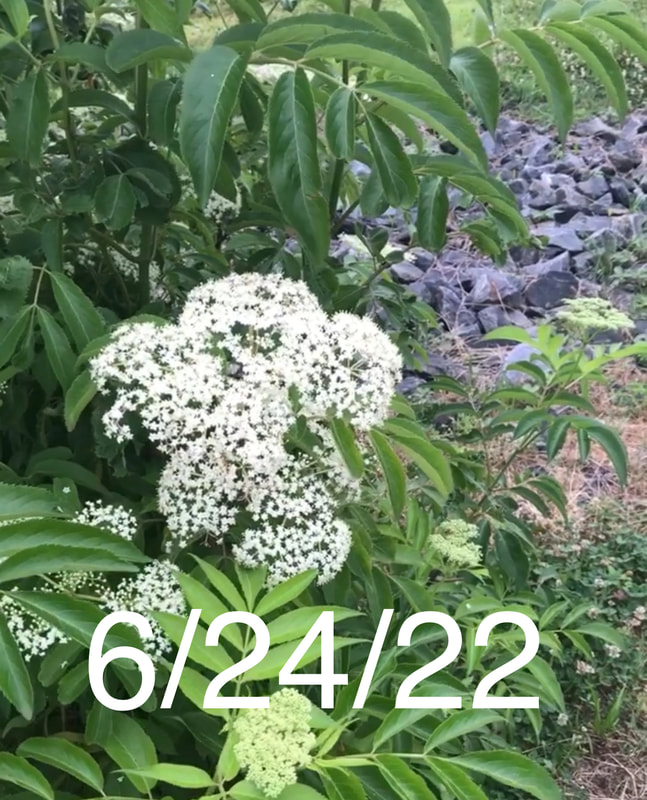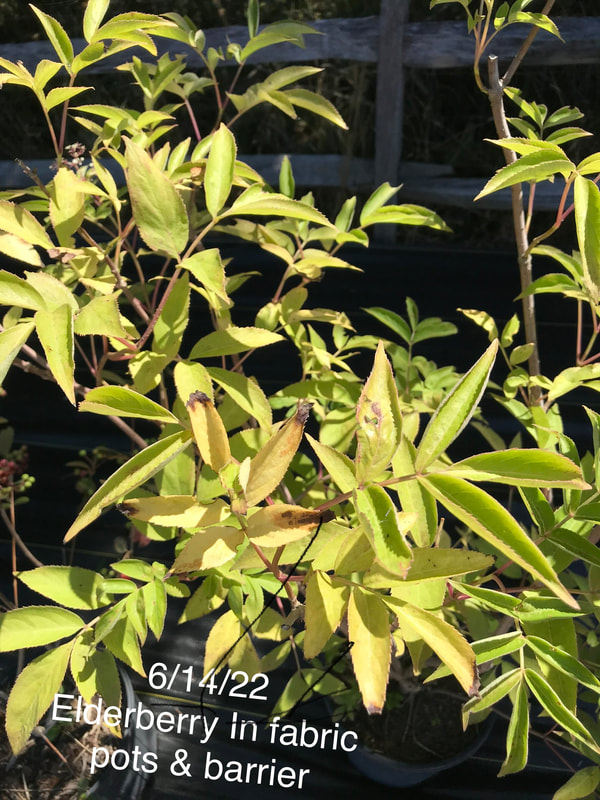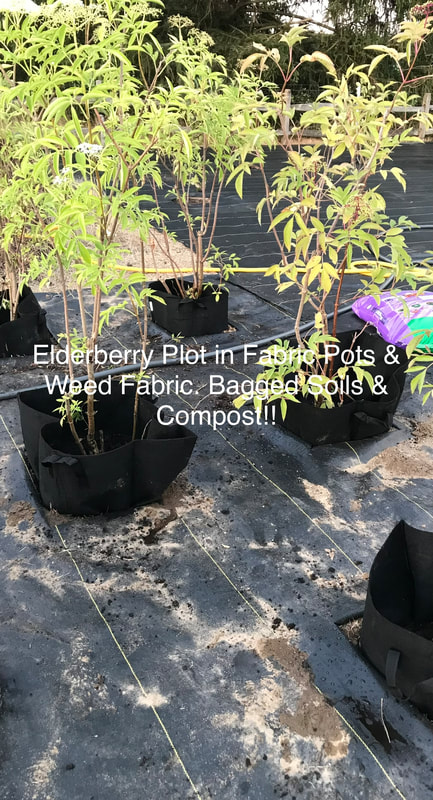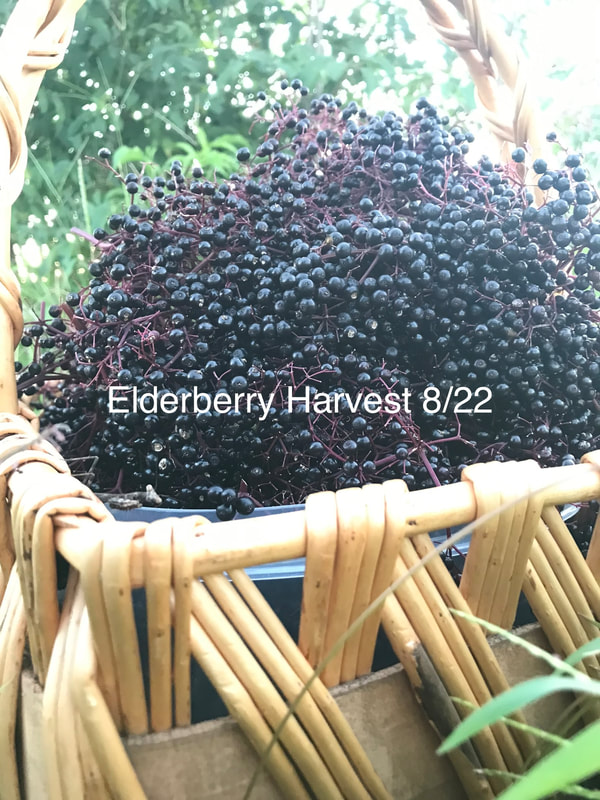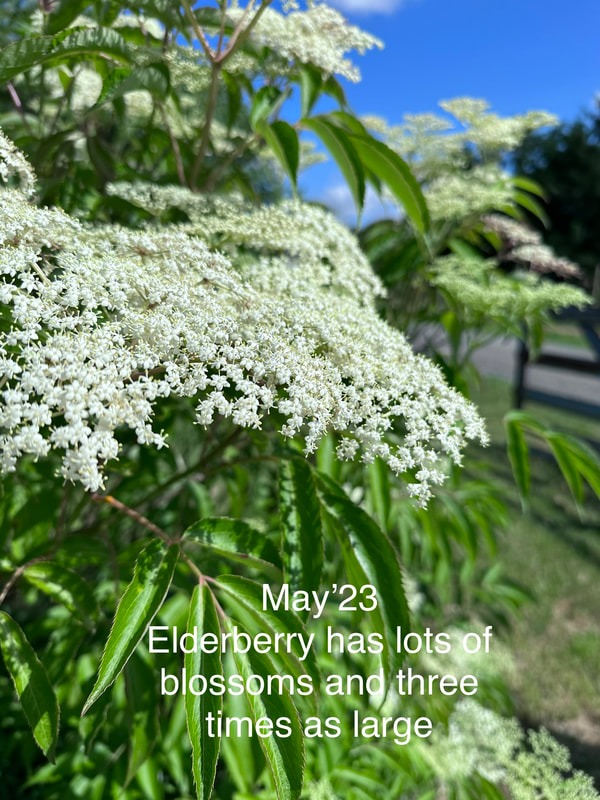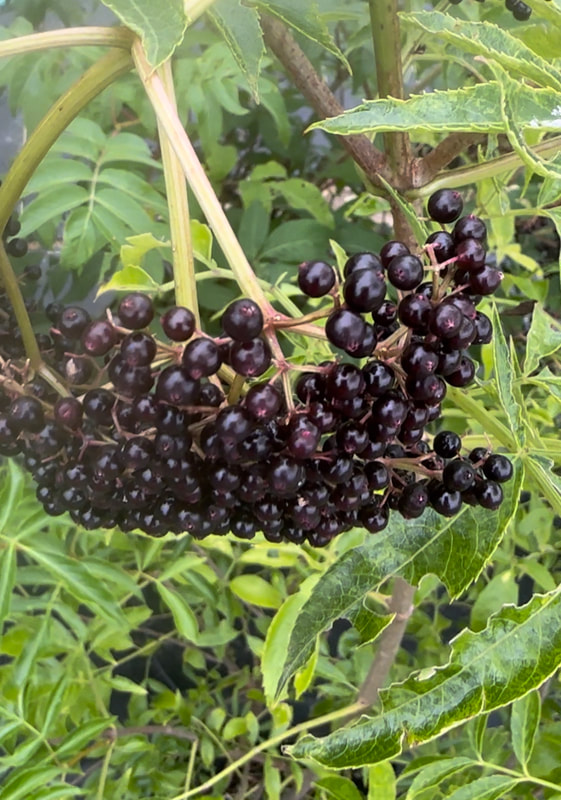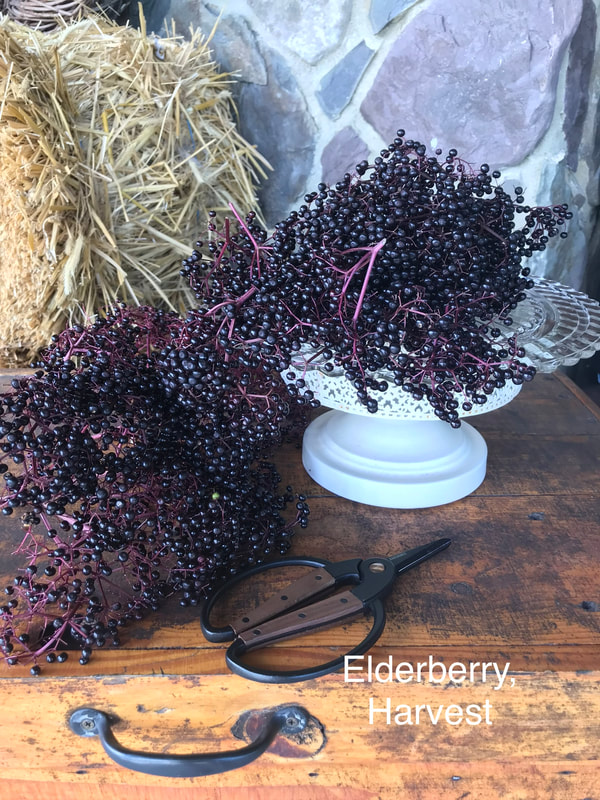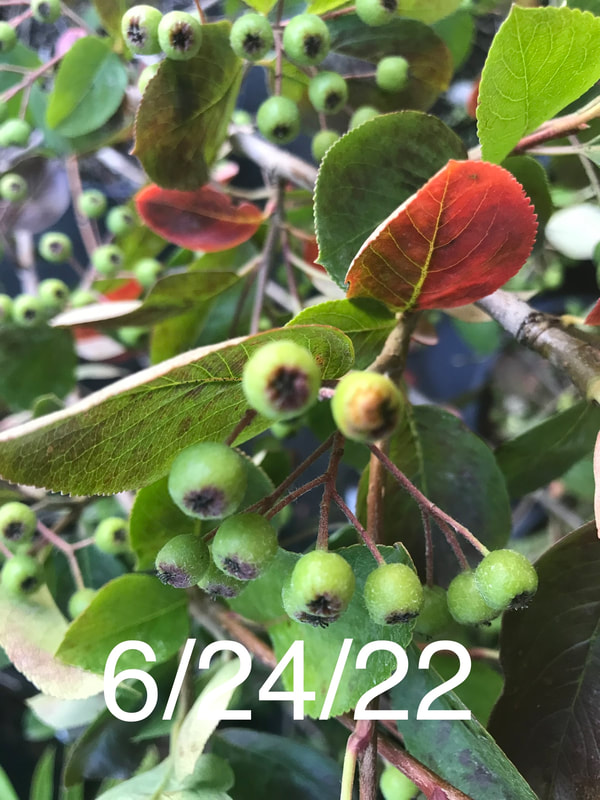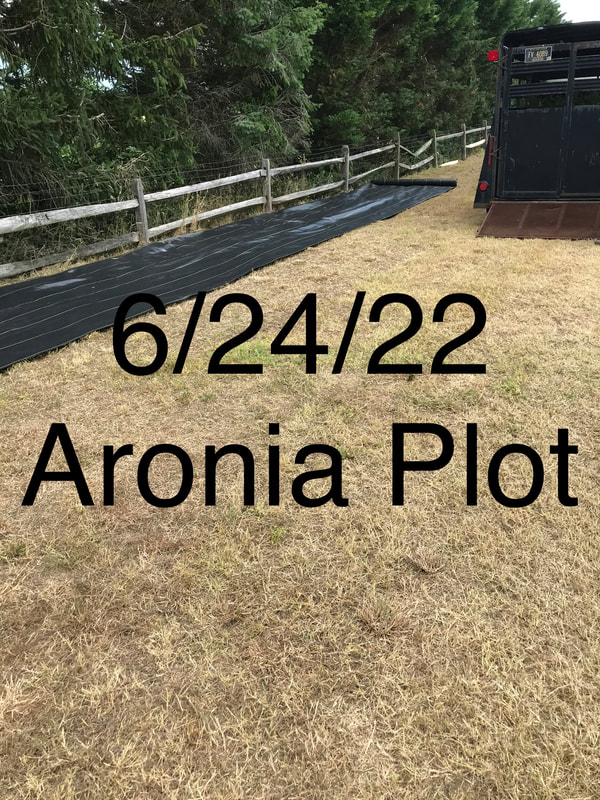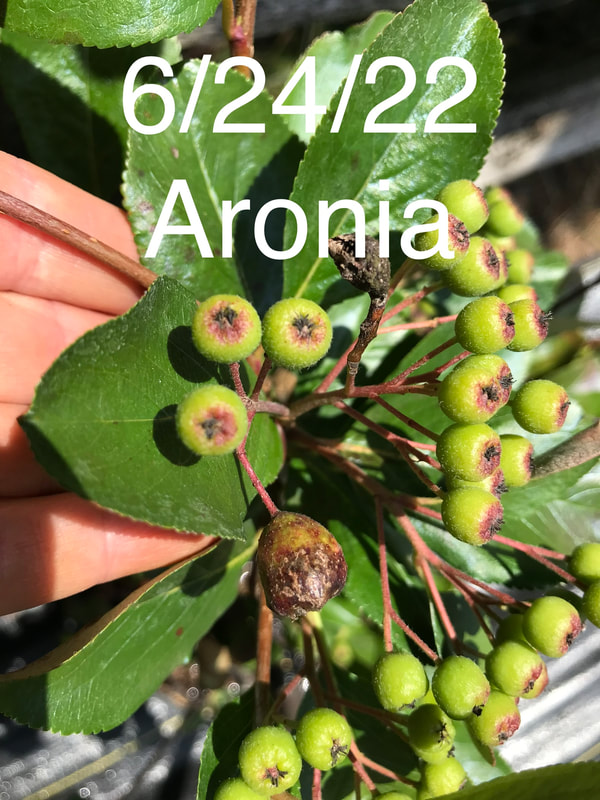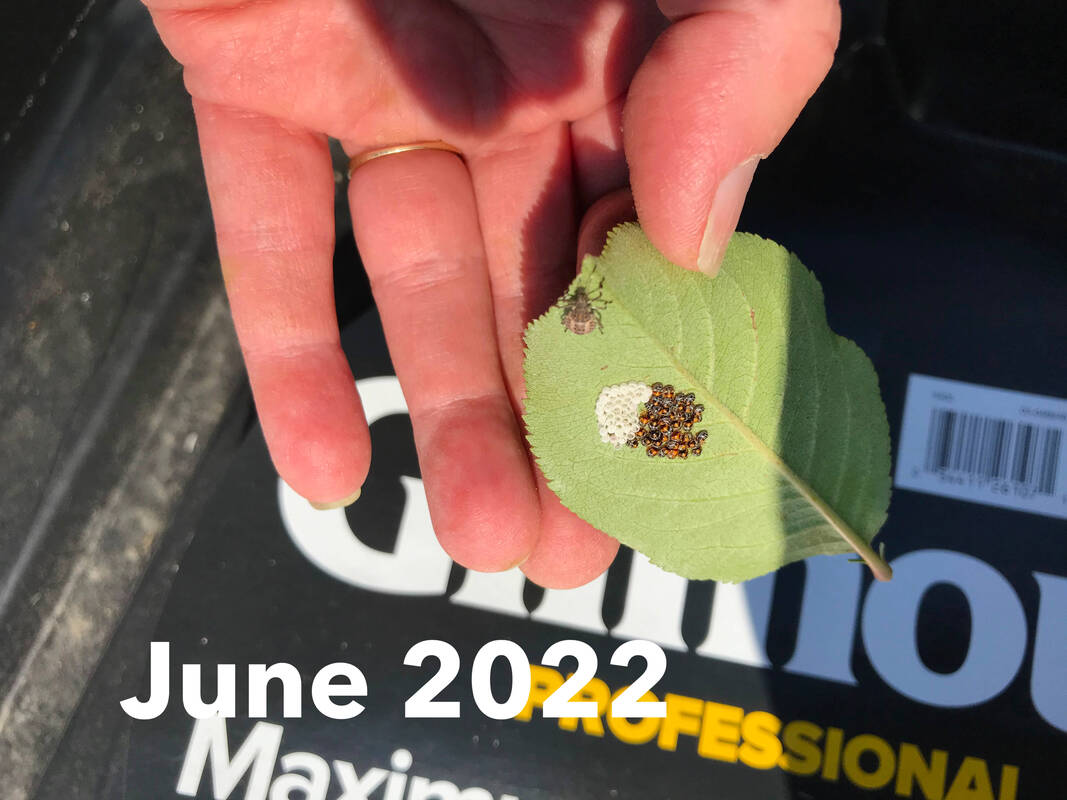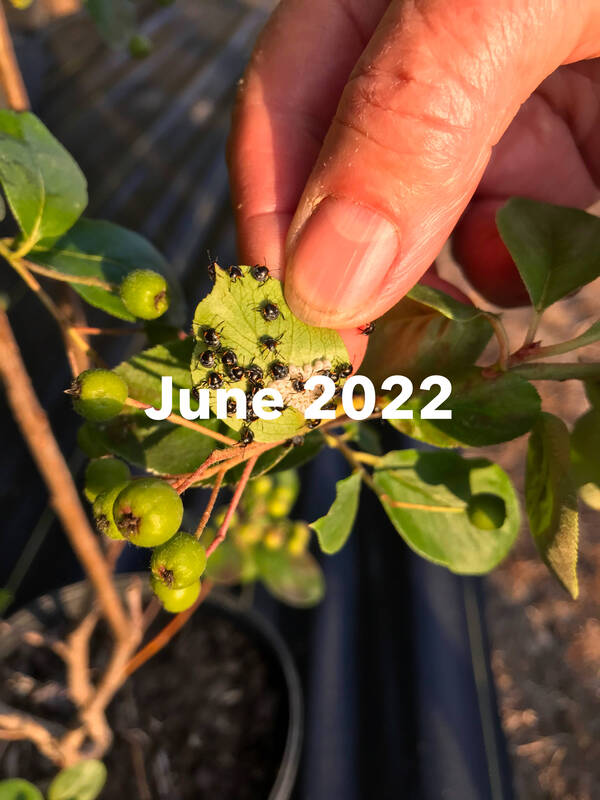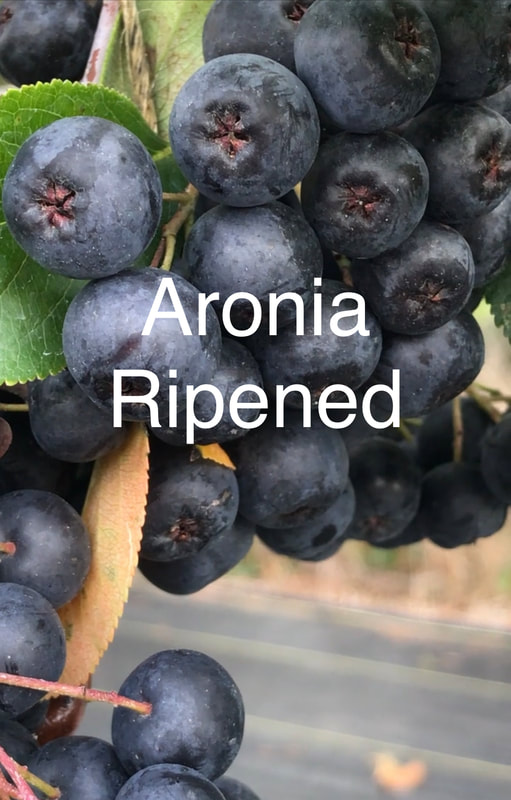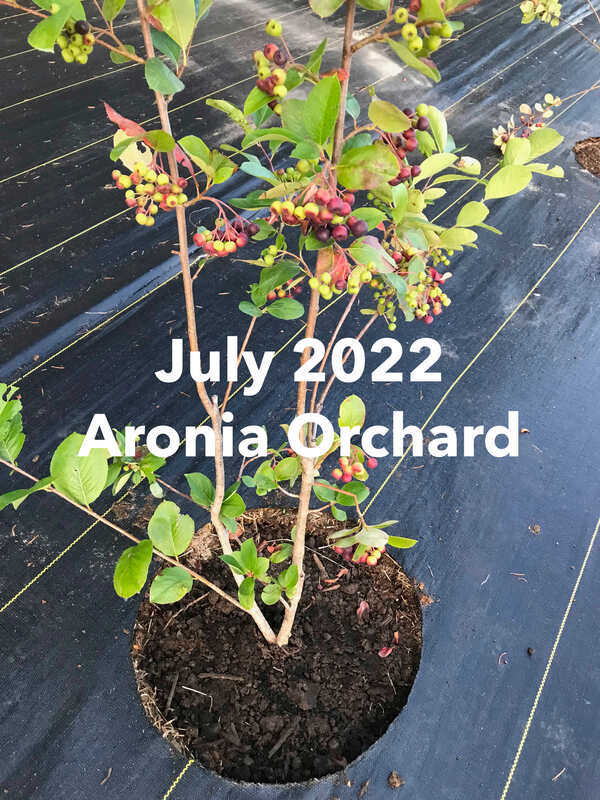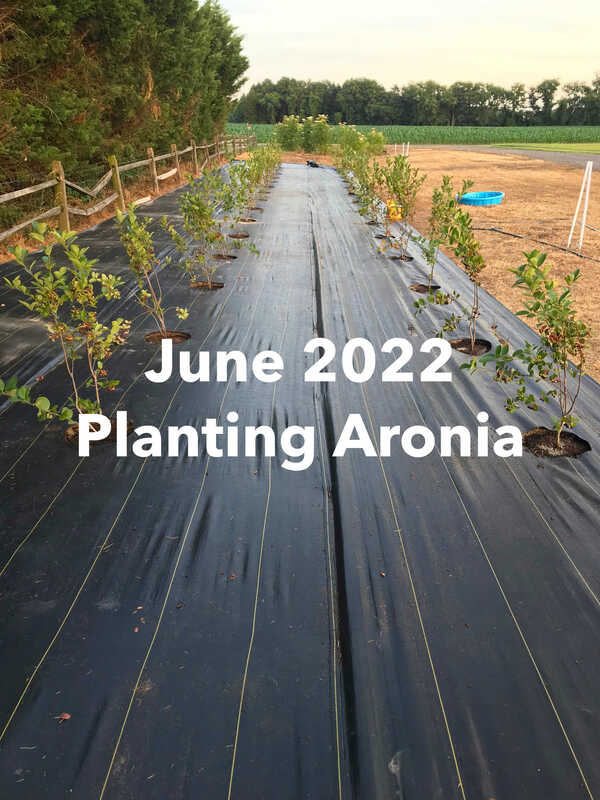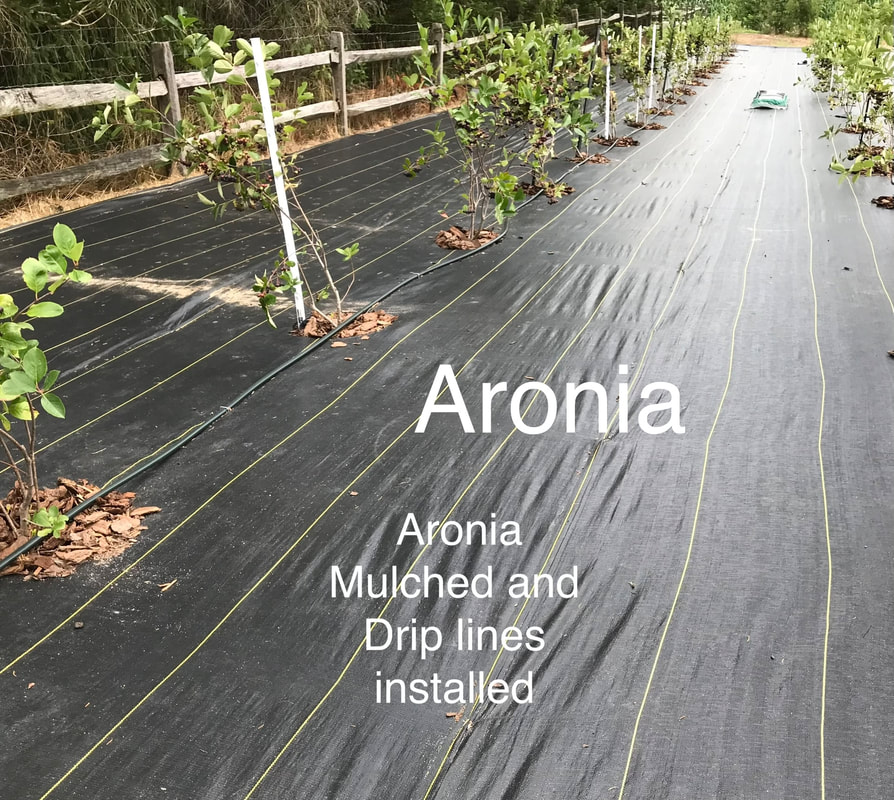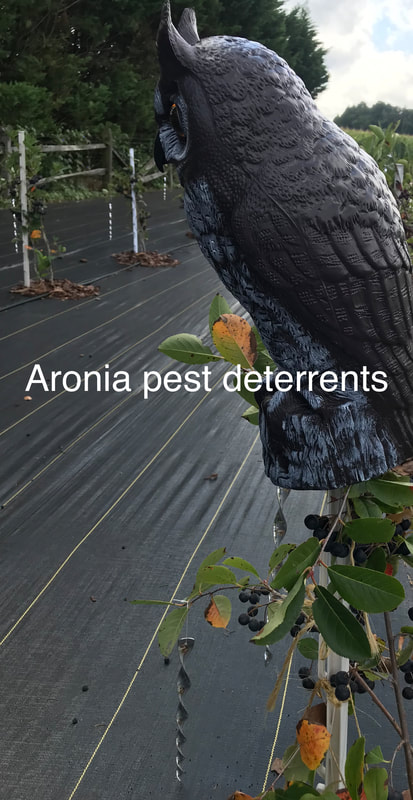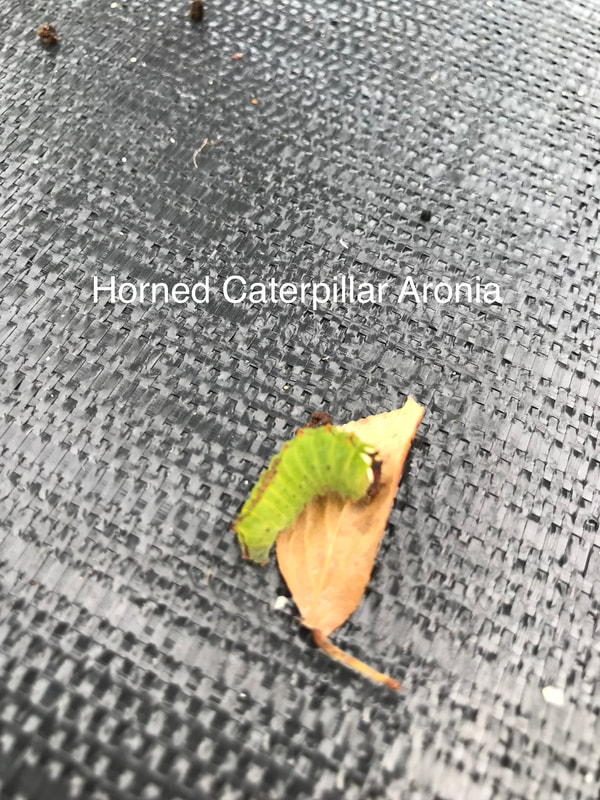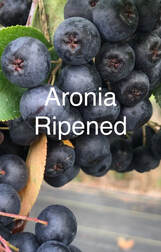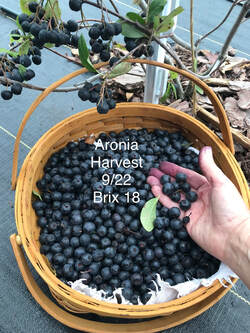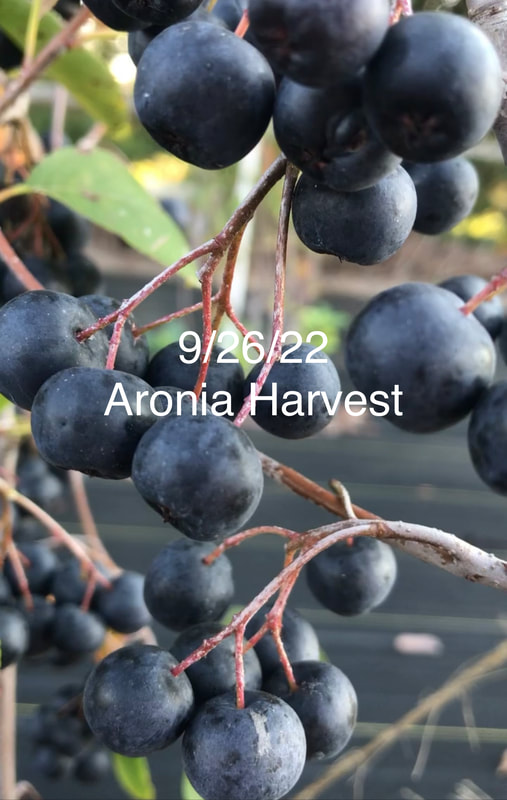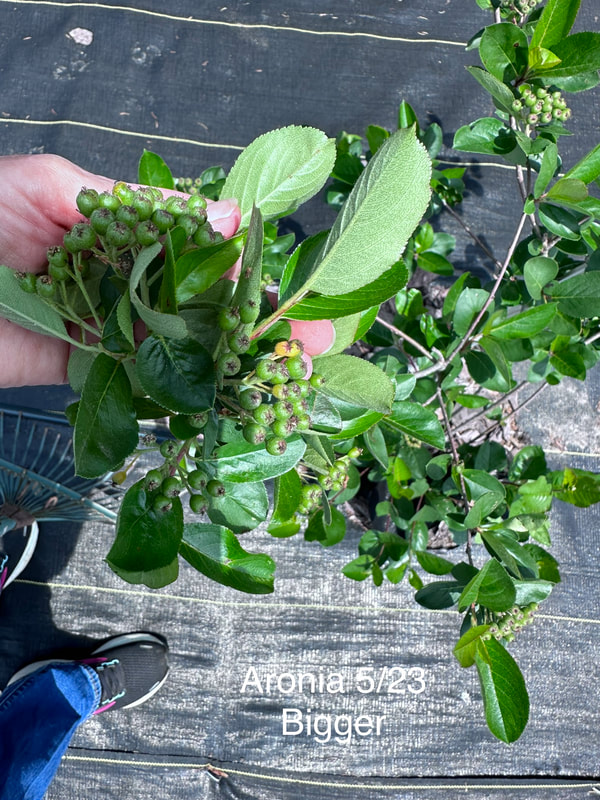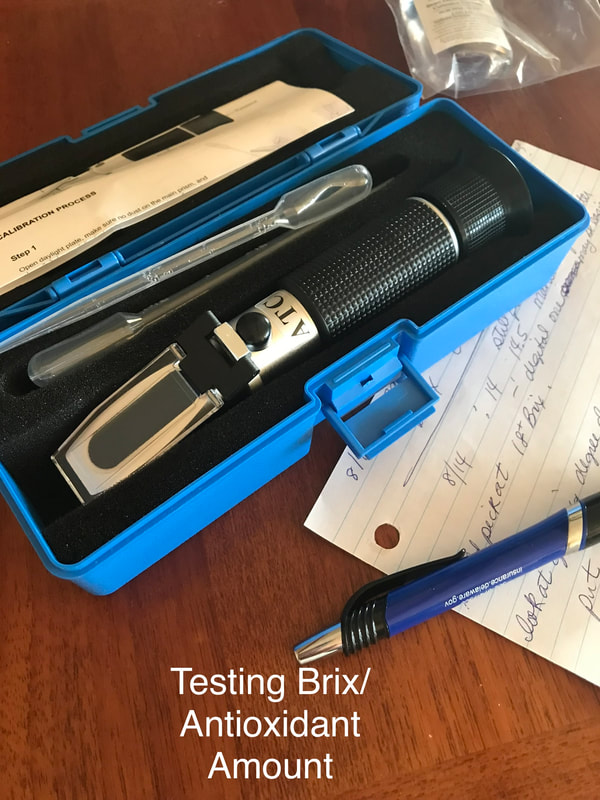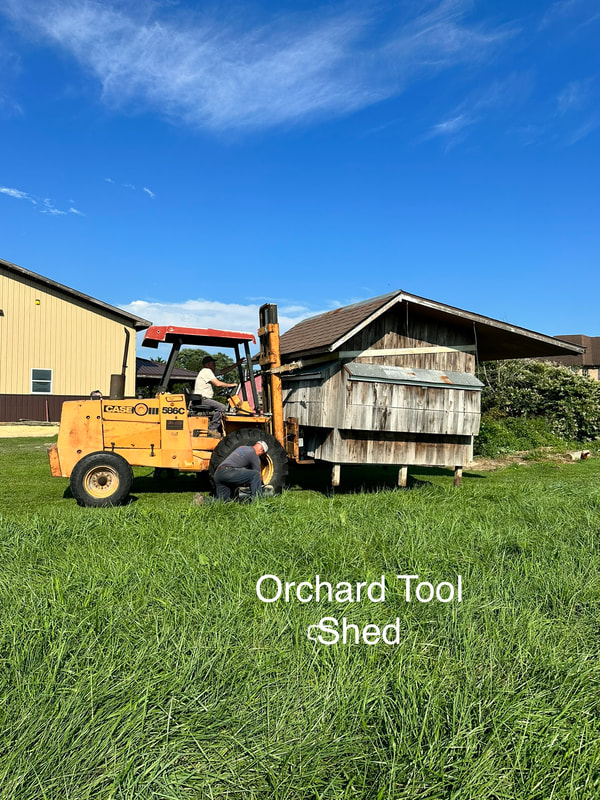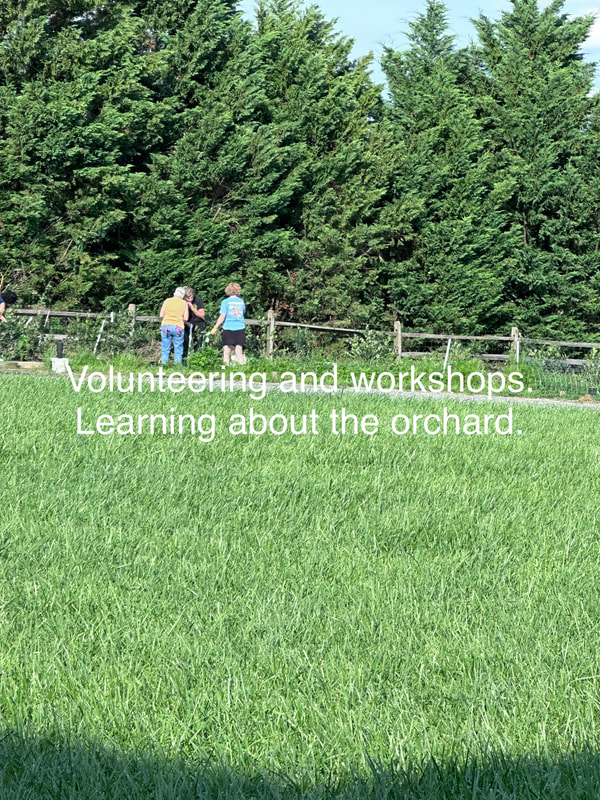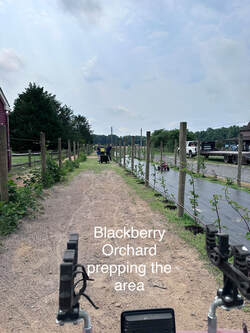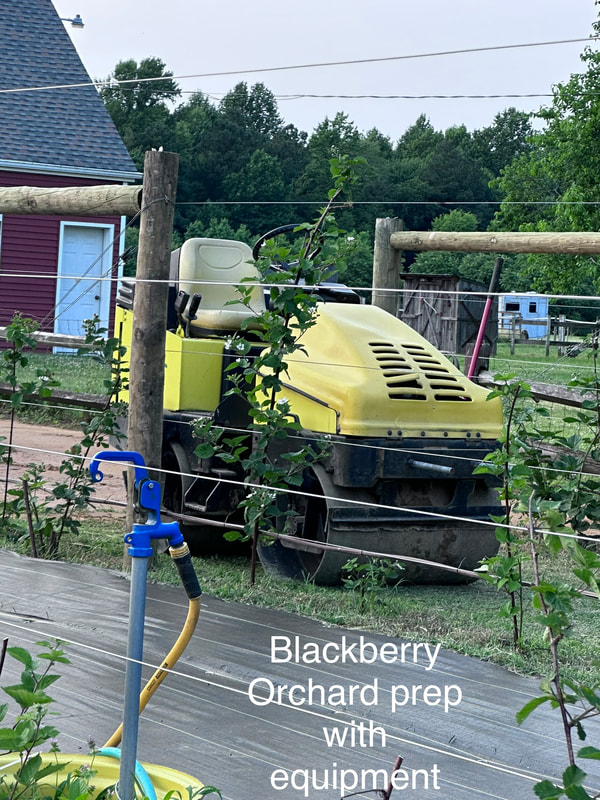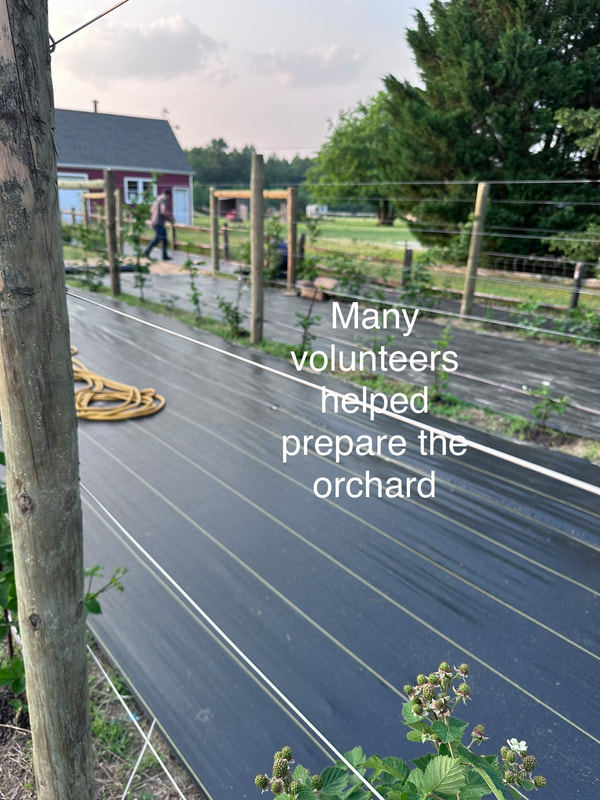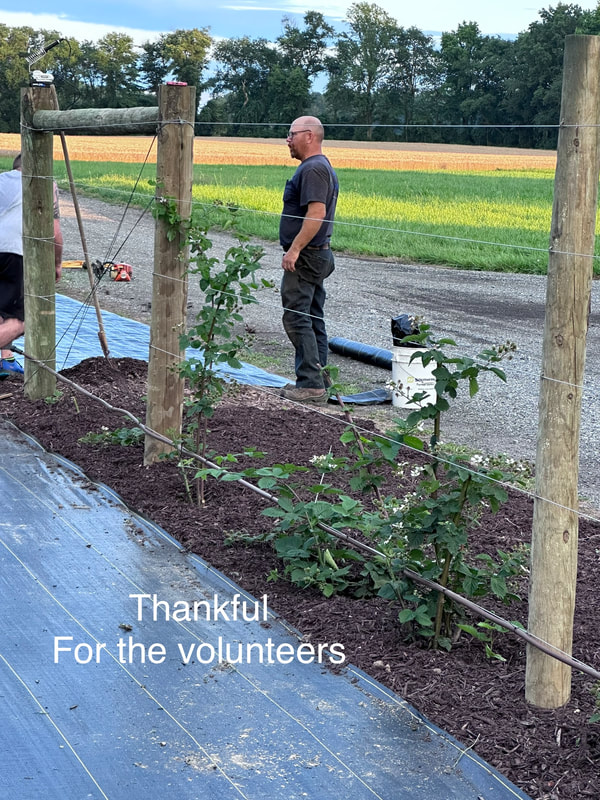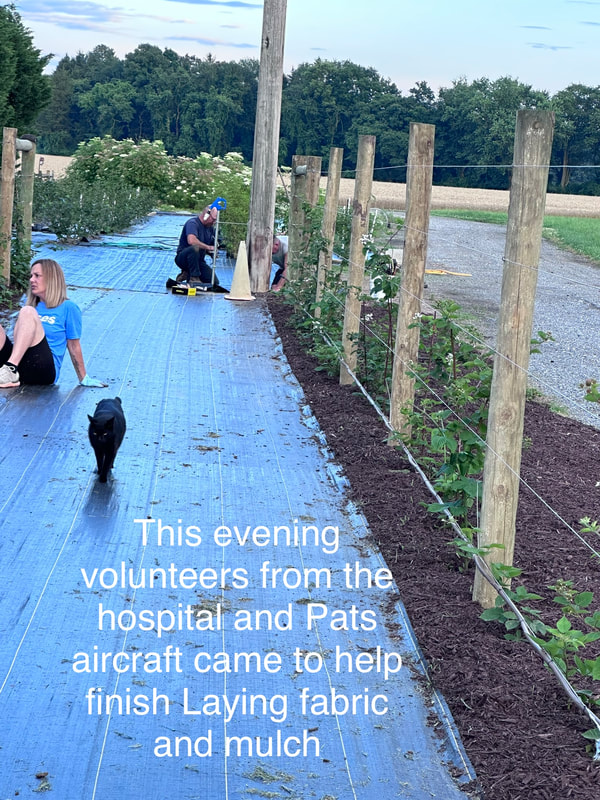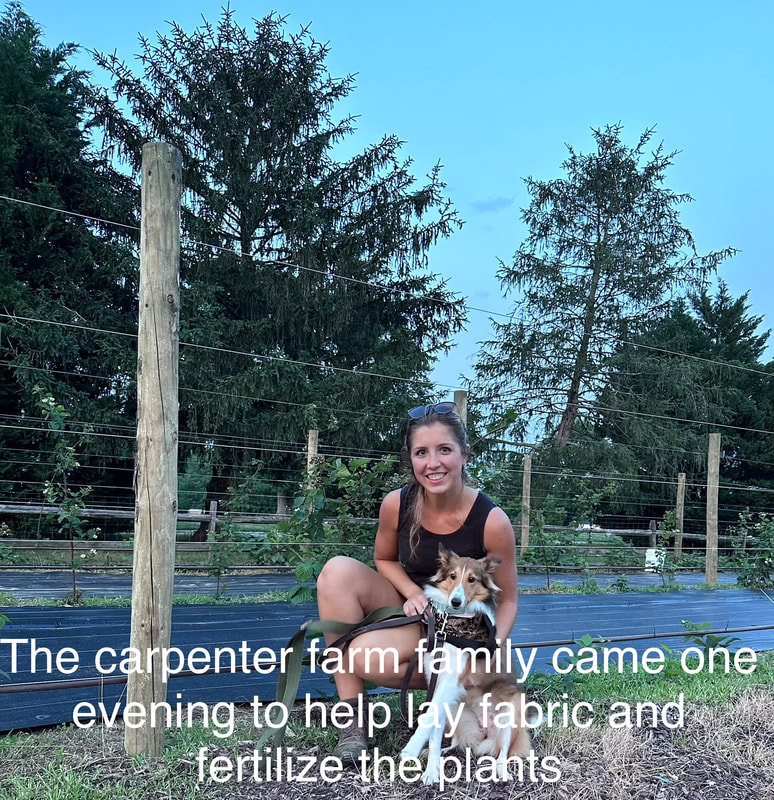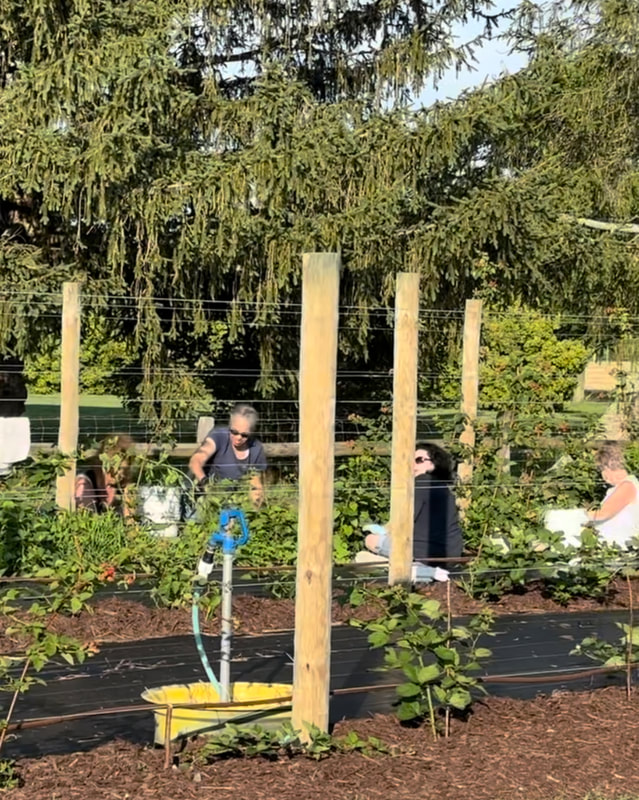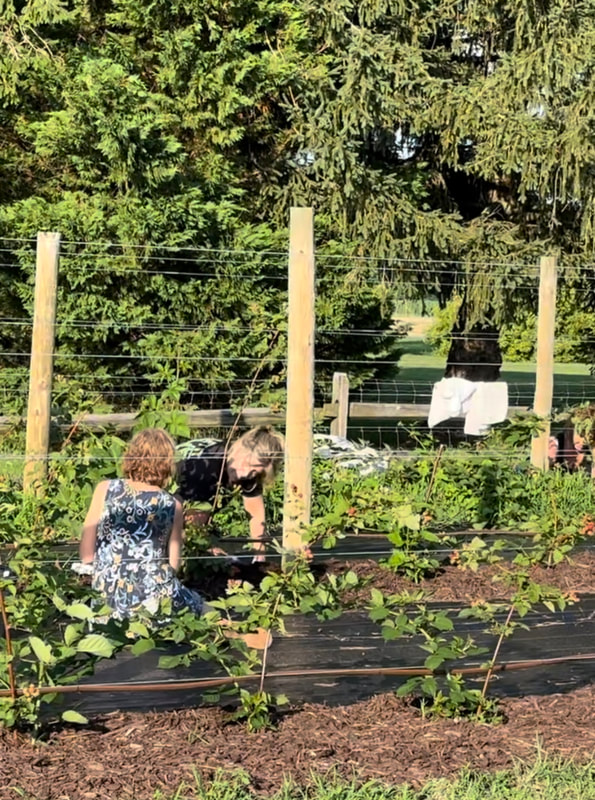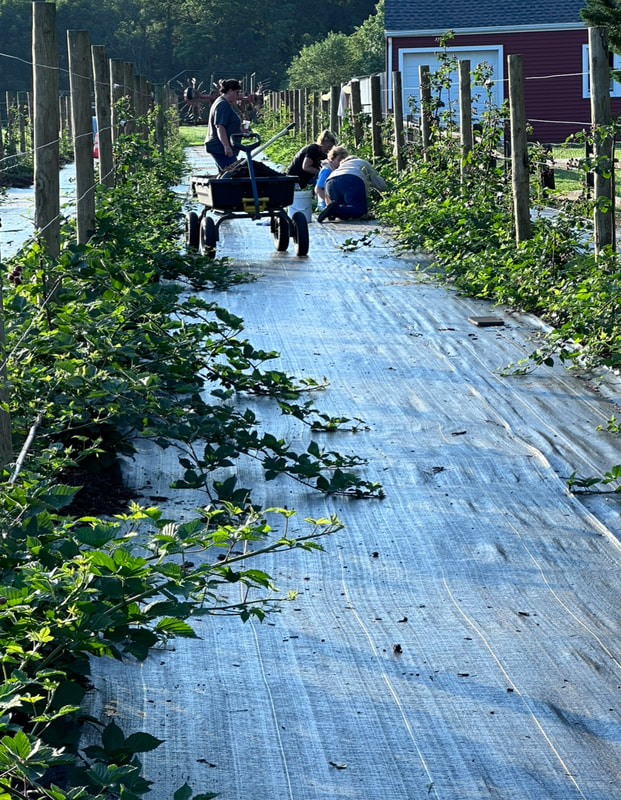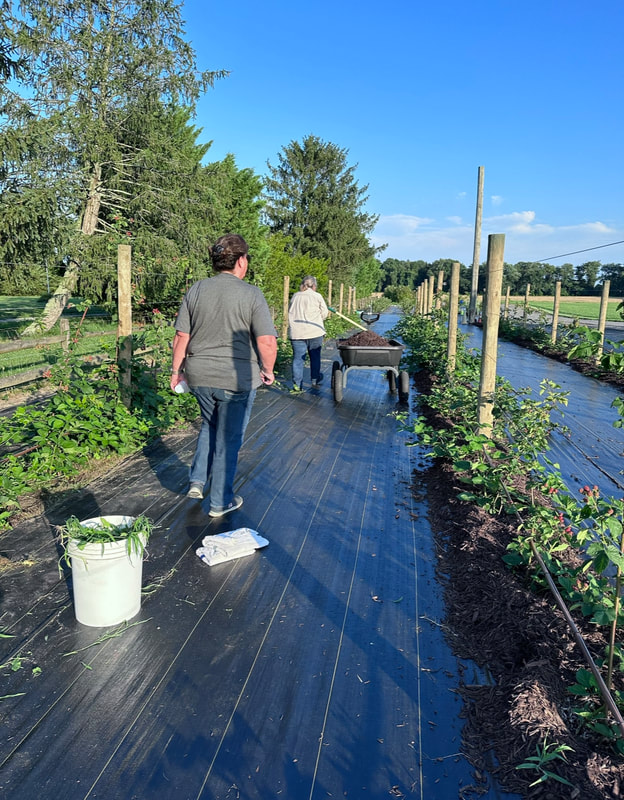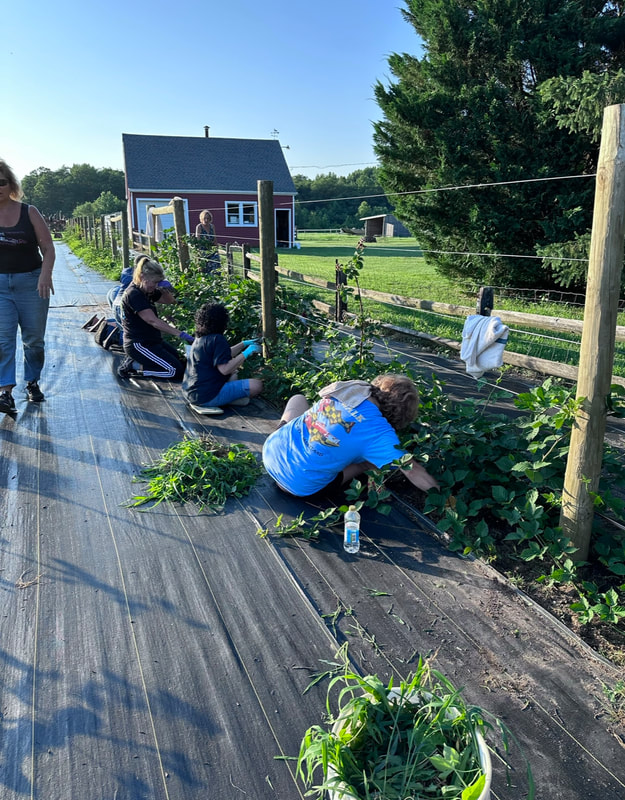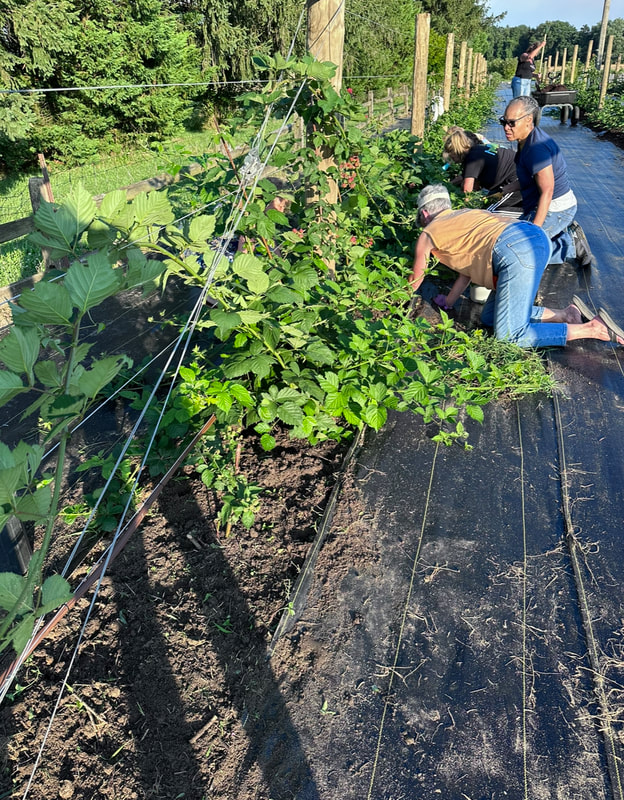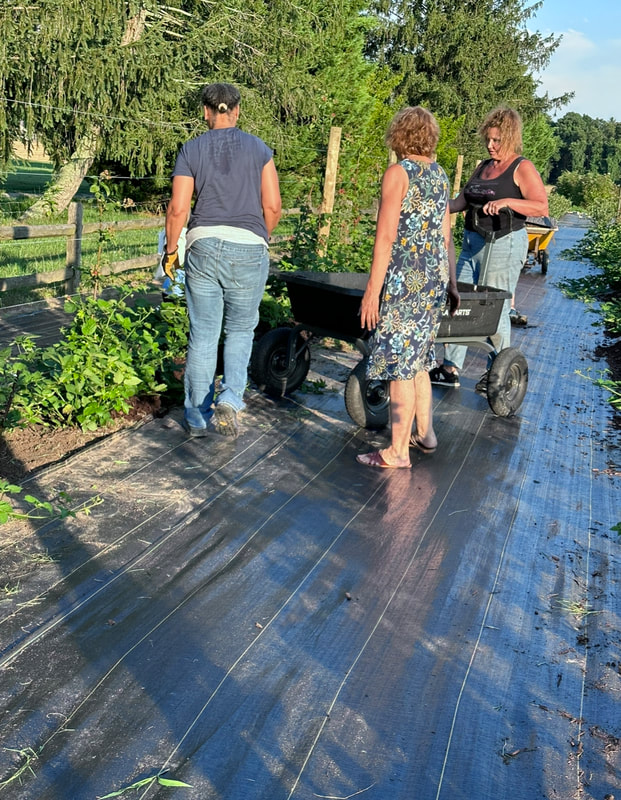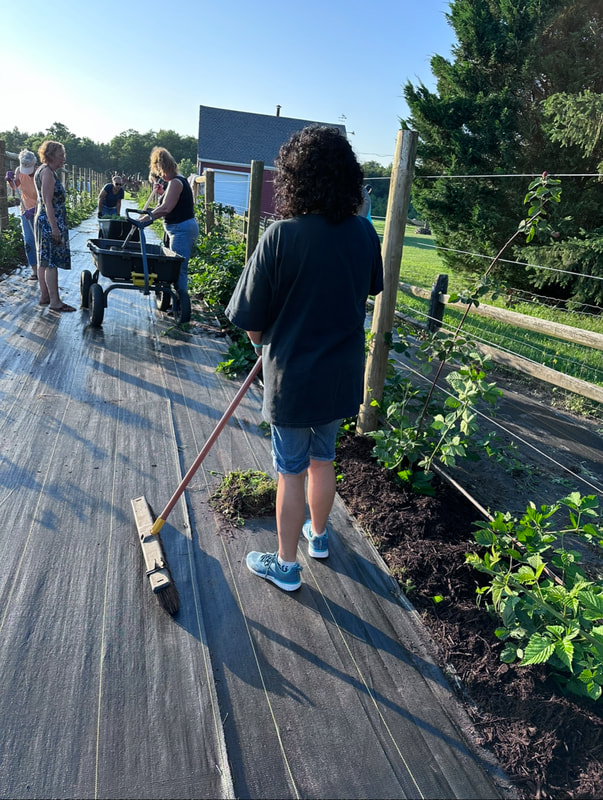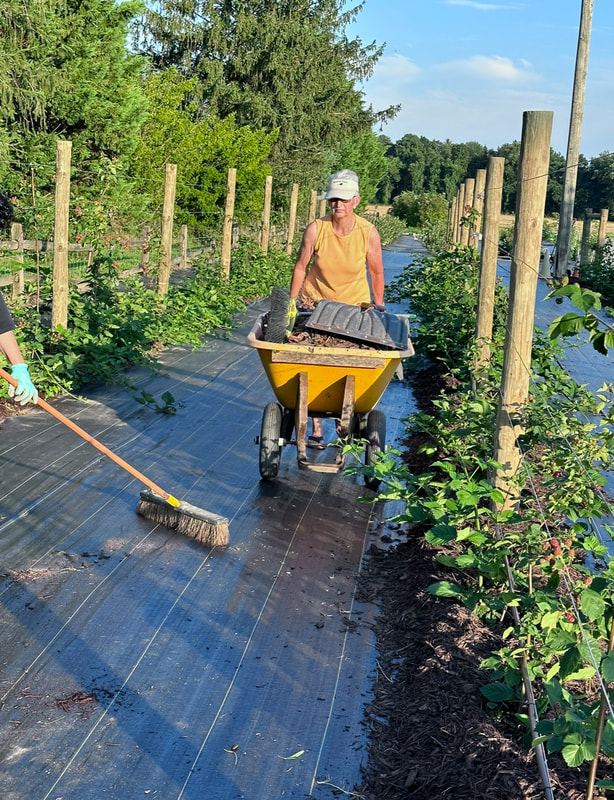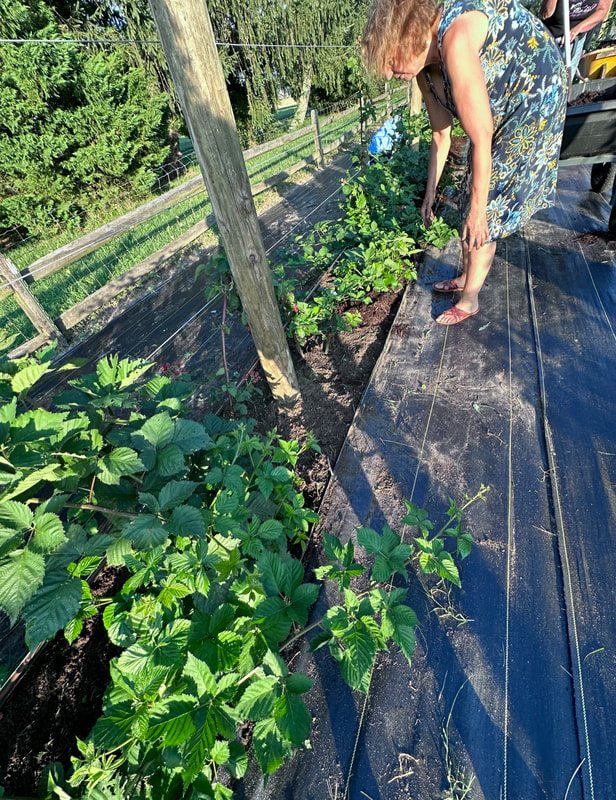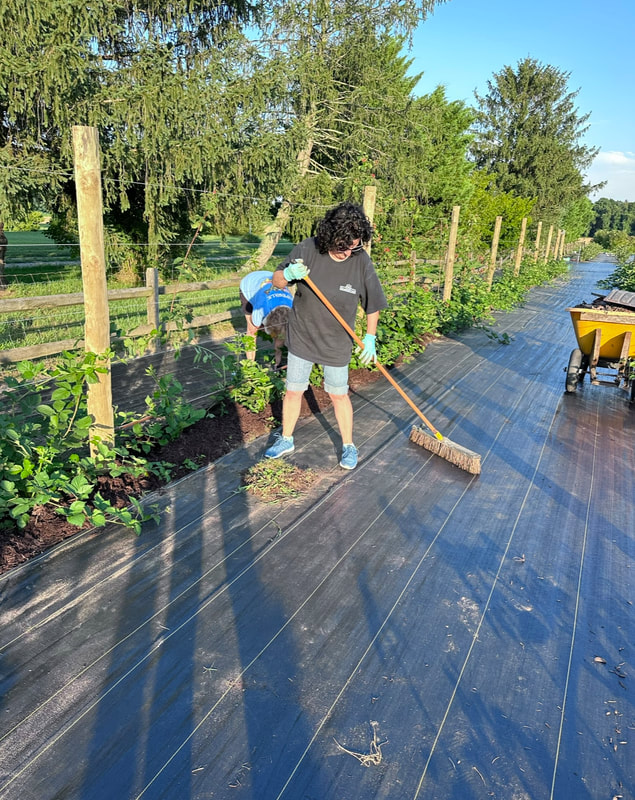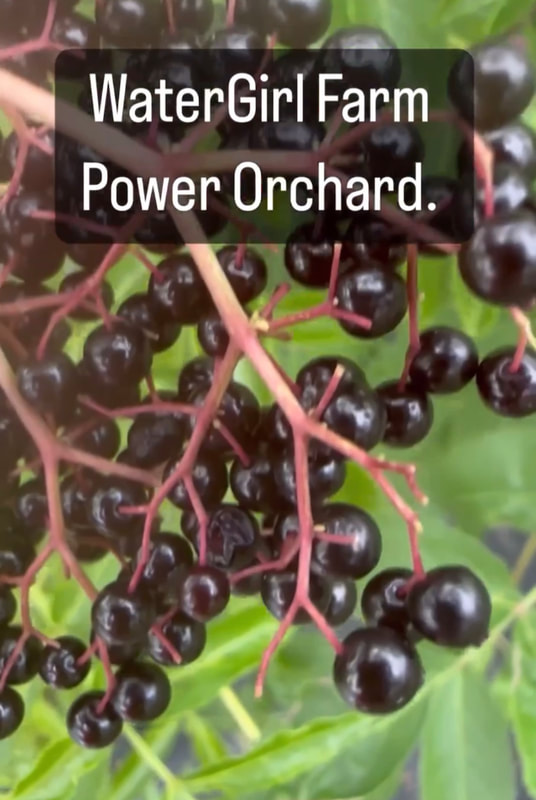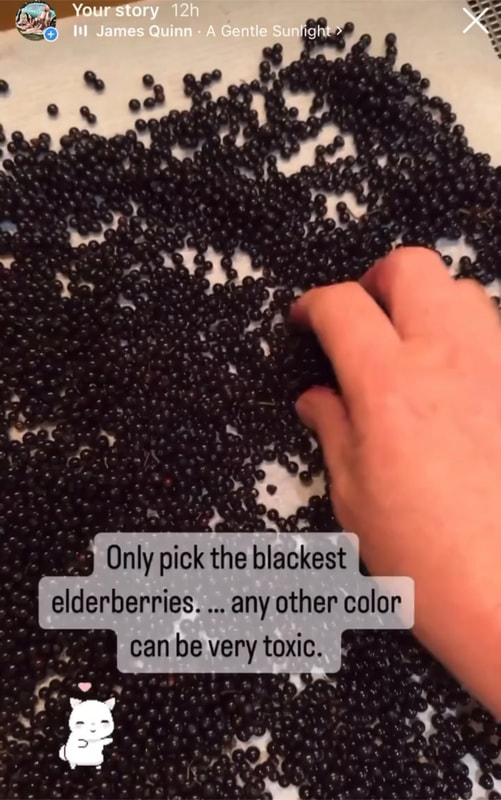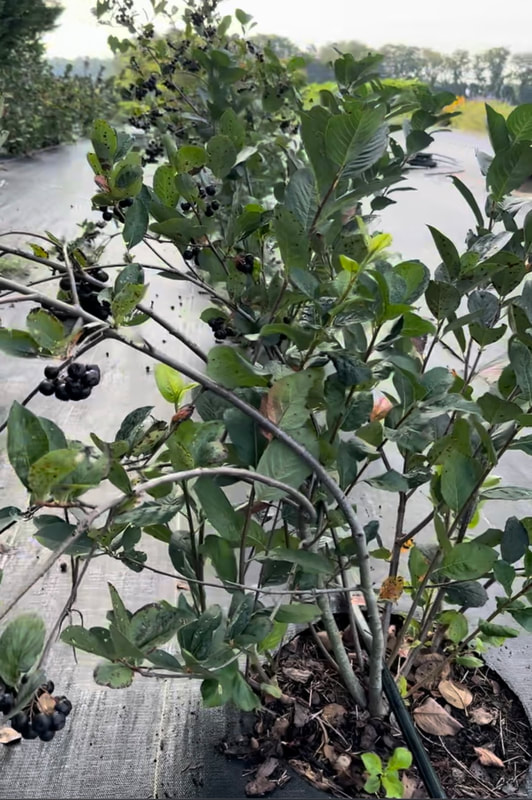August/September 2023...
We are excited to share our PowerBerry experience and knowledge in order to help potential growers across Delaware and the US.
Our Plan was to establish a Carefree and Healthy PowerBerry Orchard- growing 50 Viking Aronia, 25 Elderberry, and Several Hundred Yards of Thornless Erect Triple Crown Blackberry. This wouldn't be possible without the help of funding by USDA-AMS Specialty Crop Block Grant Program.
Aronia:
We planted Viking Aronia that came already 3 foot in height and with berries.
We spaced these 6 foot apart in rows 8 feet apart. This would allow space for a wagon or wheelbarrow, and would allow plenty of air movement for healthier plants.
We used a black plastic over the entire orchard area, with only a 12” hole burned for each plant. The planting hole was dug out, and added new fertilized soil and peat moss for required acidity. We chose to mulch with pine bark to add more acidity and in keeping the mulch ‘loose’ and airy. Drip lines were installed to each plant to provide much needed water during establishment and dry spells.
In June, we noticed pest pressure, and U of DE revealed cedar-quince rust and a cherry fruit worm. I treated organically with neem oil and a rust treatment.
Other pests noted during the growing season: Birds, Deer, Rabbits, Unicorn Caterpillar, Brown Marmorated Stink Bug, Spotted Wing Drosophila, Japanese Beetle, and aphid
We relied heavily on organic pest methods, including fencings, nettings, and deterrents for deer, rabbits, and birds.
Aronia ripened by August. Starting August 15th, we daily tested the Brix/anthocyanin levels with a Refractometer- showing levels of 14-20. We were aiming for a brix level of 20, although most of the berries were picked at a level of 18/19 by Sept. 7th to keep from being dried and shriveled.
These were harvested by hand, into a basket, and sorted. Then, into the freezer, so that they could be later used in herbal preparations and/or sold. We attempted to use a Harvest Right Freeze Dryer to Freeze Dry the berries for using/selling later. An immediate problem with the freeze dryer caused a huge delay in this process.
Pruning: we pruned late winter- at the base- if there were canes that seemed old.
Elderberry
We planted in several locations to determine how well it survives given various circumstances.
-York was planted in a rocky non irrigated area. It thrived.
-Adams was planted in the yard and it thrived, although the weeds grew around it and we were afraid to mow closely for fear of cutting the suckers that were spreading.
-Canada was planted in a grow bag- using new bagged soils. This grow bag was sunken into the black plastic fabric -in the area near the aronia orchard. We wanted to prohibit them from “suckering into a thicket”. We ran drippers into each plant for dry time periods.
This was our own growing invention and worked well for preventing suckering, while maintaining a healthy plant. These produced as much as the other cultivars and were kept tidy.
Pests/problems: Only one of the Canadian plants seemed ‘off’, which makes us question if it truly is a Canadian cultivar or did we accidentally get another. Anyhow- this plant did not do as well as the others- although planted in the same grouping and on an outer edge( leaves shriveled and hardly any berries).
These were harvested by hand and frozen for future processing. These were used in Elderberry Syrups and Extracts.
Pruning: Late Winter, and was very easy to remove excess branching.
Blackberry Orchard:
Blackberry plants were spaced every 3 ft along a 6 ft high trellis. These 6 rows are spaced 10 feet to allow equipment and airflow. The entire area is on black plastic fabric to make for an easier and enjoyable picking experience. The plants were fertilized upon planting and wood mulch was applied around the plants.
Triple Crown thornless blackberries ripened in the summer and there were no pests except for the Japanese Beetle.
In September, the vines were intertwined throughout the trellising to keep tidy.
These were harvested by hand for future processing.
We did attempt to freezedry these in a Harvest Right Freeze Dryer, although there were several equipment malfunctions immediately. This delayed the process.
A wonderful project:
Many people came to our farm to specifically learn more about our PowerBerry Orchard project. We’ve enjoyed educating the public and are hoping that they will grow their own powerful berries!
We’re so very thankful to have worked with Delaware Dept of Ag and University of Delaware and Delaware State University. Without their help, we could never have accomplished all that we did. We're looking forward to many more people visiting our PowerBerry Orchard!
Dean and Jody
We are excited to share our PowerBerry experience and knowledge in order to help potential growers across Delaware and the US.
Our Plan was to establish a Carefree and Healthy PowerBerry Orchard- growing 50 Viking Aronia, 25 Elderberry, and Several Hundred Yards of Thornless Erect Triple Crown Blackberry. This wouldn't be possible without the help of funding by USDA-AMS Specialty Crop Block Grant Program.
Aronia:
We planted Viking Aronia that came already 3 foot in height and with berries.
We spaced these 6 foot apart in rows 8 feet apart. This would allow space for a wagon or wheelbarrow, and would allow plenty of air movement for healthier plants.
We used a black plastic over the entire orchard area, with only a 12” hole burned for each plant. The planting hole was dug out, and added new fertilized soil and peat moss for required acidity. We chose to mulch with pine bark to add more acidity and in keeping the mulch ‘loose’ and airy. Drip lines were installed to each plant to provide much needed water during establishment and dry spells.
In June, we noticed pest pressure, and U of DE revealed cedar-quince rust and a cherry fruit worm. I treated organically with neem oil and a rust treatment.
Other pests noted during the growing season: Birds, Deer, Rabbits, Unicorn Caterpillar, Brown Marmorated Stink Bug, Spotted Wing Drosophila, Japanese Beetle, and aphid
We relied heavily on organic pest methods, including fencings, nettings, and deterrents for deer, rabbits, and birds.
Aronia ripened by August. Starting August 15th, we daily tested the Brix/anthocyanin levels with a Refractometer- showing levels of 14-20. We were aiming for a brix level of 20, although most of the berries were picked at a level of 18/19 by Sept. 7th to keep from being dried and shriveled.
These were harvested by hand, into a basket, and sorted. Then, into the freezer, so that they could be later used in herbal preparations and/or sold. We attempted to use a Harvest Right Freeze Dryer to Freeze Dry the berries for using/selling later. An immediate problem with the freeze dryer caused a huge delay in this process.
Pruning: we pruned late winter- at the base- if there were canes that seemed old.
Elderberry
We planted in several locations to determine how well it survives given various circumstances.
-York was planted in a rocky non irrigated area. It thrived.
-Adams was planted in the yard and it thrived, although the weeds grew around it and we were afraid to mow closely for fear of cutting the suckers that were spreading.
-Canada was planted in a grow bag- using new bagged soils. This grow bag was sunken into the black plastic fabric -in the area near the aronia orchard. We wanted to prohibit them from “suckering into a thicket”. We ran drippers into each plant for dry time periods.
This was our own growing invention and worked well for preventing suckering, while maintaining a healthy plant. These produced as much as the other cultivars and were kept tidy.
Pests/problems: Only one of the Canadian plants seemed ‘off’, which makes us question if it truly is a Canadian cultivar or did we accidentally get another. Anyhow- this plant did not do as well as the others- although planted in the same grouping and on an outer edge( leaves shriveled and hardly any berries).
These were harvested by hand and frozen for future processing. These were used in Elderberry Syrups and Extracts.
Pruning: Late Winter, and was very easy to remove excess branching.
Blackberry Orchard:
Blackberry plants were spaced every 3 ft along a 6 ft high trellis. These 6 rows are spaced 10 feet to allow equipment and airflow. The entire area is on black plastic fabric to make for an easier and enjoyable picking experience. The plants were fertilized upon planting and wood mulch was applied around the plants.
Triple Crown thornless blackberries ripened in the summer and there were no pests except for the Japanese Beetle.
In September, the vines were intertwined throughout the trellising to keep tidy.
These were harvested by hand for future processing.
We did attempt to freezedry these in a Harvest Right Freeze Dryer, although there were several equipment malfunctions immediately. This delayed the process.
A wonderful project:
Many people came to our farm to specifically learn more about our PowerBerry Orchard project. We’ve enjoyed educating the public and are hoping that they will grow their own powerful berries!
We’re so very thankful to have worked with Delaware Dept of Ag and University of Delaware and Delaware State University. Without their help, we could never have accomplished all that we did. We're looking forward to many more people visiting our PowerBerry Orchard!
Dean and Jody
Elderberry Planting Progress:
Plot area A: Success in planting along rocky 'ditch like' environment. No obvious pests. Plants flourished during project.
Plot Area B: Success in planting in Center of Lawn without any weed barrier. No obvious pests. Plants flourished during project. Needed to mow down shoots that would eventually become a thicket. Preventive maintenance means cutting shoots regularly.
Plot Area C: Success in planting Within fabric weed barrier. Each bush planted inside a fabric pot and then sunk into a hole dug in a week fabric surround. Drip lines for water at each bush. Prevented bushes becoming a thicket. May cause some root bound in future. Will be necessary to thin runners out each spring and add more bagged soil and compost. Very nice way to control the Elderberry for a backyard setting.
Plot area A: Success in planting along rocky 'ditch like' environment. No obvious pests. Plants flourished during project.
Plot Area B: Success in planting in Center of Lawn without any weed barrier. No obvious pests. Plants flourished during project. Needed to mow down shoots that would eventually become a thicket. Preventive maintenance means cutting shoots regularly.
Plot Area C: Success in planting Within fabric weed barrier. Each bush planted inside a fabric pot and then sunk into a hole dug in a week fabric surround. Drip lines for water at each bush. Prevented bushes becoming a thicket. May cause some root bound in future. Will be necessary to thin runners out each spring and add more bagged soil and compost. Very nice way to control the Elderberry for a backyard setting.
The Viking Aronia Plot was planted with the guidance of University of DE and UDE Extension. The wiregrass site was covered with a DeWitt Fabric meant to remain out in all weather conditions throughout the year and a warranty of 5 years. We used a welding tool to cut the bush holes, along with a small Butane torch. This need slightly acidic soil, therefore we filled each hole with Bagged compost and peat moss (for acid) We planted 6 feet apart in rows spaced 10 feet apart. These will get full sun from 8:30 am-sundown. Drippers are at each plant and row covers for pest management. When plants arrived, U of DE tested and photographed several pests, such as Stink Bug, Apple Maggot, Cherry Fruit Worm and spotted winged drosophila.
We sprayed with Neem oil immediately and we were proactive about disposing of insect ridden fruit and leaves- checking daily. The observed diseases included cedar-quince rust. Weeds were controlled with a Pine Bark Mulch. Plants were stabilized using 4 foot stakes and twine.
June - August 2022:
We sprayed with Neem oil immediately and we were proactive about disposing of insect ridden fruit and leaves- checking daily. The observed diseases included cedar-quince rust. Weeds were controlled with a Pine Bark Mulch. Plants were stabilized using 4 foot stakes and twine.
June - August 2022:
Our Blackberry Orchard built 2022-23 was built with strength and safety in mind. The young, elderly and handicapped will have safe footing while picking berries at WaterGirl Farm. A sturdy fabric crosses the entire orchard except for a small area for the plants to grow along under drippers.
This was a huge project and it was all hands on deck with the family- however 2023 gave us a few hiccups.
2023 Spring : Dean began having strokes and we were in and out of hospitals like a revolving door. Finally, medical teams began figuring out it was Dean's heart. Dr.'s said Dean wasn't to lift or strain.
Tell that to a hay farmer who never sits still.
This was such a scary time for our family and things were so uncertain. Emergency Open Heart turned into months of medical teams coming up with the best surgery solution.
WELL Friends...
SO MANY in the community came out to help us get our orchard project completed! We had other farmers come out to help, friends that lived in town, and friends just living anywhere- even from other states! There were friends that just wanted something to do they said ( haha!) And MANY came back for more torture!
Volunteers would learn 'hands-on' how to do a certain job in the orchard and then would come back later in the week to learn how to do something else. There were many more sharing and teaching opportunities than we had originally anticipated. People brought their determination and positive vibes with them on those sweaty evenings! And we are so grateful.
These wonderful people in our community helped with fertilizing plants, staking plants, pulling weeks, placing mulch, stringing blackberry vines, cleaning up the orchard, and even prayed for us.
Praying for us right in the orchard. The biggest circle of people- holding hands...can you imagine??
I cried crocodile tears that evening.
We're so very thankful and blessed beyond any words I can possibly come up with.
Many Blessing~ Dean and Jody
Spring, Lake, and Rain
